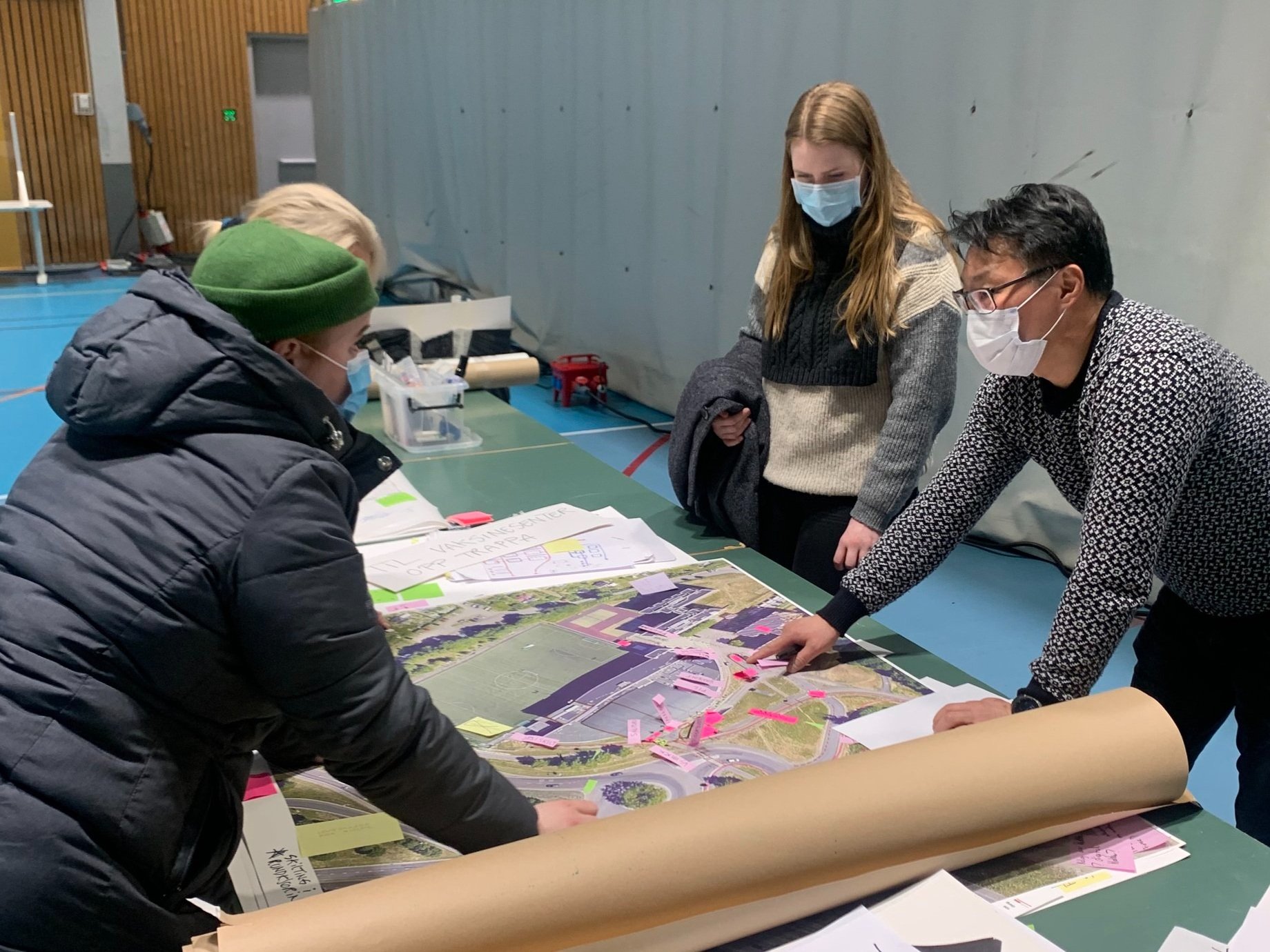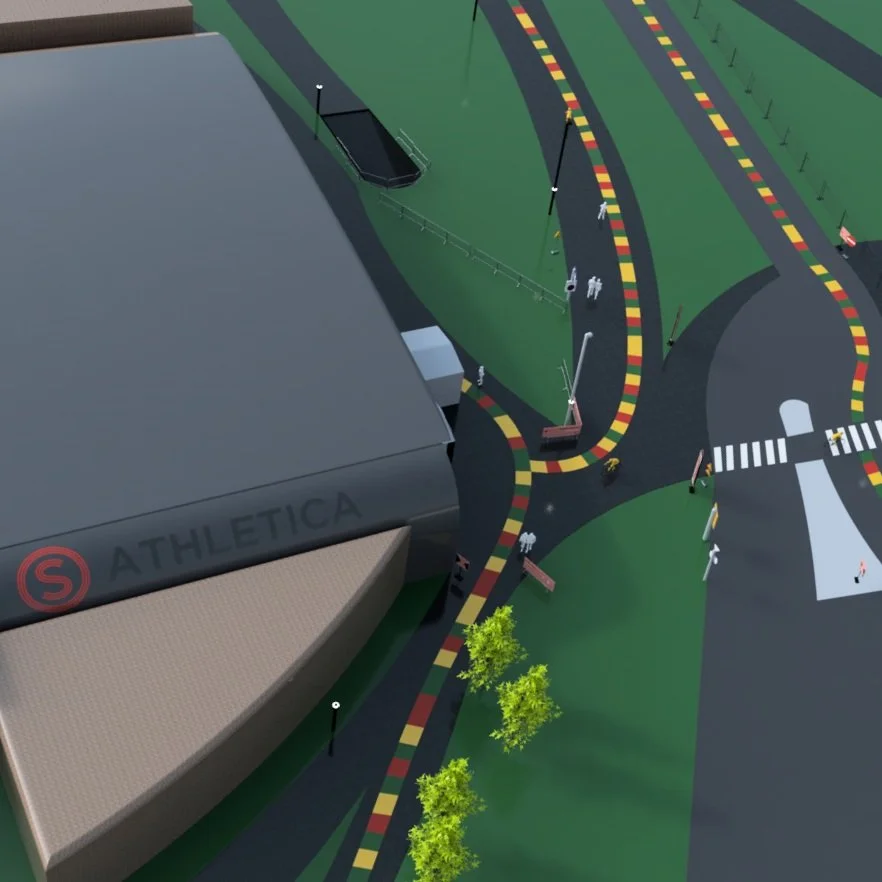
Project Unntakstilstander
Way-finding at Nordre Aker vaccination center, and priming the users for vaccination through a board game
Intent At the beginning of the corona pandemic temporary vaccination centers was opened in order to reduce the strain on permanent health facilities. In collaboration with service designers from area Nordre Aker in Oslo, we facilitated the sports hall Domus Athletica into a functional center that could effectively handle 5000 patients a week. We were several groups of students working on the project, and my group focused on the outdoor area and wayfinding.
Project information
OsloMet
5 weeks
Group project
Focus on way-finding, priming, gamification, principles of persuasion, and intermedia storytelling.
Process The process was very dynamic and fast-paced considering it was barely a week from the start of the project until the center was opened. The area outside Domus was chaotic due to various traffic groups, and construction work. The fast-paced environment of the project was interesting because we got to constantly test our concepts and adapt to the situation.
Design Our final result was split in two, where the first part was the physical wayfinding solution with road signs we delivered to Nordre Aker. The second part was a conceptual, playful solution including gamification theory.
Although the first part of the delivery might have been sufficient enough, we wanted to explore using game dynamics to activate and sub-consciously engage the users more than by just following road signs.
This second concept had four elements:
a priming and activating board game called "Unntakstilstander"
a special golden game piece you got after being vaccinated
a pamphlet inviting the citizens to be vaccinated
using elements from the game to make wayfinding more accessible at the physical location.
Afterthought I really enjoyed how this project allowed me and my group to develop two different ways of approaching a task, and how different the concepts became. This was the first time as a designer I was using game dynamics and working actively with the psychology behind the design. We worked with theories like Kahneman’s system 1 and system 2 and how to activate them, principles for persuasion, and intermedia storytelling. The project, which took place in rather gloomy times, turned out to be fun and enjoyable, regardless of the pandemic. It was also a project where we did not necessarily try to make it easy for the users but rather nudged them into wanting to be vaccinated, to earn their special golden piece, and waiting to play the board game. These theories and methods are definitely something I am bringing with me as a designer, also how to solve problems in less traditional ways.
The process in itself was rewarding, how we got to work with service designers on a realistic project and that we were able to test our prototypes rapidly. I am happy to have been able to contribute a small amount to our society during the uncertain times of the pandemic, and that we were able to make a serious topic more approachable and less scary.










